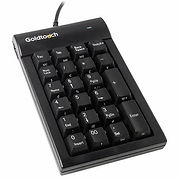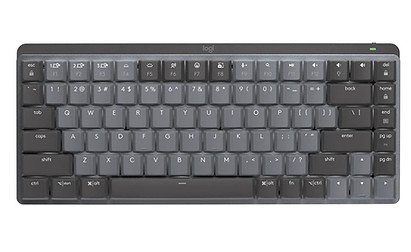
Shoulder Pain? Your Keyboard
May Be The Problem

Published: May 12, 2025
If you hold your mouse in your right hand and you have right shoulder or upper back pain, it may be because of the position of your mouse. Standard full size keyboards require you to reach laterally for your mouse, increasing the risk of right shoulder or right upper back injury.
The simplest solution to this problem is to use a compact keyboard, also called a mouse-friendly keyboard. If you don’t really use the numeric key pad much anyway, then this is an easy switch to make (if you are dependent on the numeric key pad, there are still options to consider, discussed later). The compact keyboard layout typically lacks a numeric key pad, and the navigation keys are re-configured to take up less space than they do on a standard keyboard. This allows you to properly center the keyboard to your midline (i.e. G-H keys lined up to your midline) while also being able to position the mouse closer to your midline so that the keyboard and mouse are both in the neutral reach zone. [Important note: the compact keyboard has standard sized keys and standard spacing between the keys. This is not to be confused with a miniature keyboard which actually has smaller keys and / or less spacing between keys. This discussion is not about miniature keyboards, which are generally used for travel purposes. The best way to tell if a compact keyboard has standard key size and spacing is to measure the distance between the left side of the Caps Lock key and the right side of the Enter key. This should measure about 11” give or take ¼”.]
Typical compact keyboards
(pictured: Evoluent Essentials Full Featured Compact Keyboard and Logitech MX Mechanical Mini)
If you are somewhat dependent on the numeric key pad but you
spend more time using the mouse than the numeric key pad, then
use of a compact keyboard is still recommended. In this case, I
would recommend that in conjunction with a compact keyboard
you should also use a stand-alone numeric key pad, which can be
positioned to the right of the mouse (or even better, to the left of the
keyboard, if you’re comfortable with this).
Compact keyboard with mouse and numeric keypad
(Pictured: Matias Mini Quiet Pro Keyboard)
With this configuration, your right hand would be within or very close to the neutral reach zone when mousing and you would only have to reach outside of the neutral reach zone when using the numeric key pad. If the numeric key pad is moved to the left side of the keyboard then you will never need to reach out of the neutral reach zone. In this manner you have swapped the relative positions of the mouse and the numeric key pad (usually the mouse is to the right of the numeric keypad, now it is to the left) so that you will spend more time in neutral and less time reaching awkwardly outward. [Often the goal is not necessarily to completely eliminate hazards, but simply to mitigate risk by reducing the exposure time to a hazard]. To be clear, this is not a practical solution for people who are very dependent on the numeric key pad as you would still be reaching laterally frequently with the right arm, just for different reasons. Also, for left-handed mouse users, none of this matters. Left-handed mouse users can sit centered to a standard keyboard (the G-H keys lined up to the midline of the body) and the numeric key pad and the mouse will be relatively equidistant from the center line.
Keyboard centered to body, mouse on the left
Notice how with the mouse on the left, when the keyboard is properly centered to your body (G-H keys lined up to your midline), there is equal reach of the left hand toward the mouse and the right hand toward the navigation keys and numeric key pad. With this layout neither arm has to reach too far laterally. This is one of those rare instances where the standard design of something is better suited to left-handed individuals.
Follow this link for a more in-depth discussion about keyboards:
Everything You Ever Wanted To Know About Keyboards But Were Afraid To Ask





